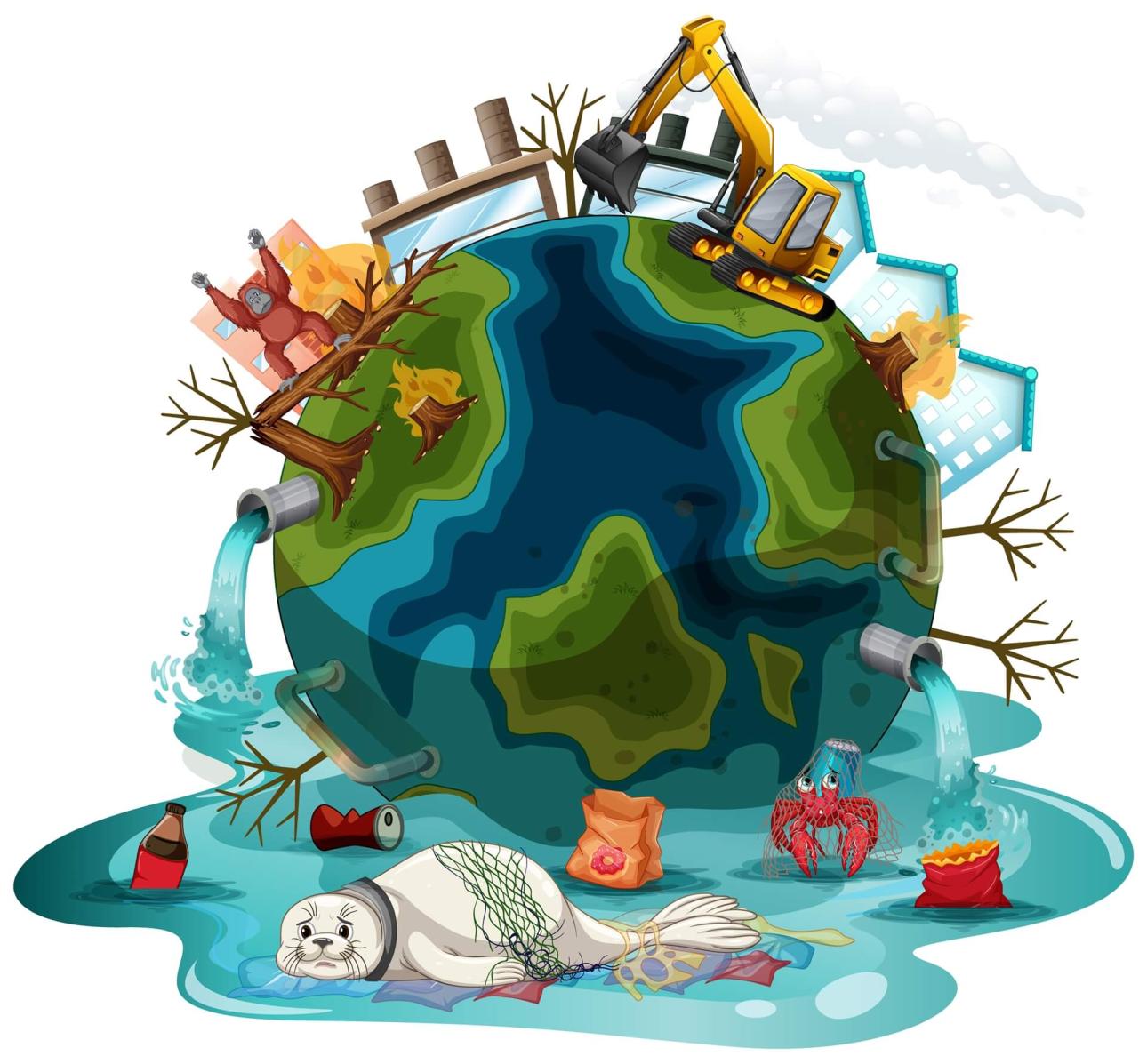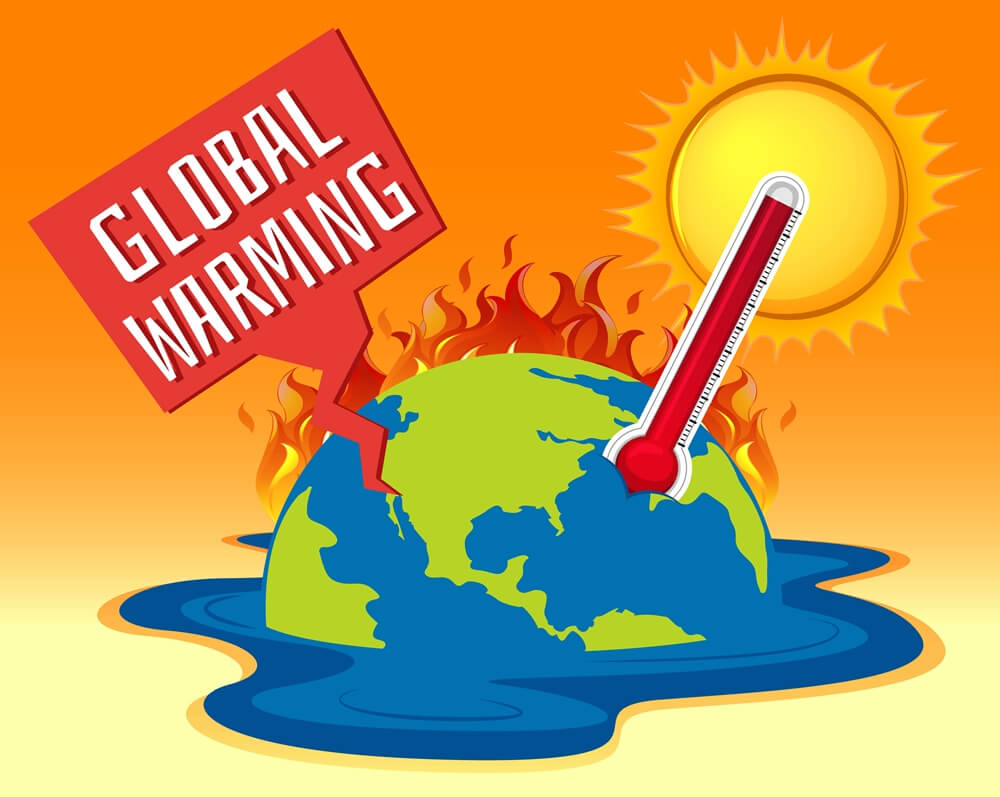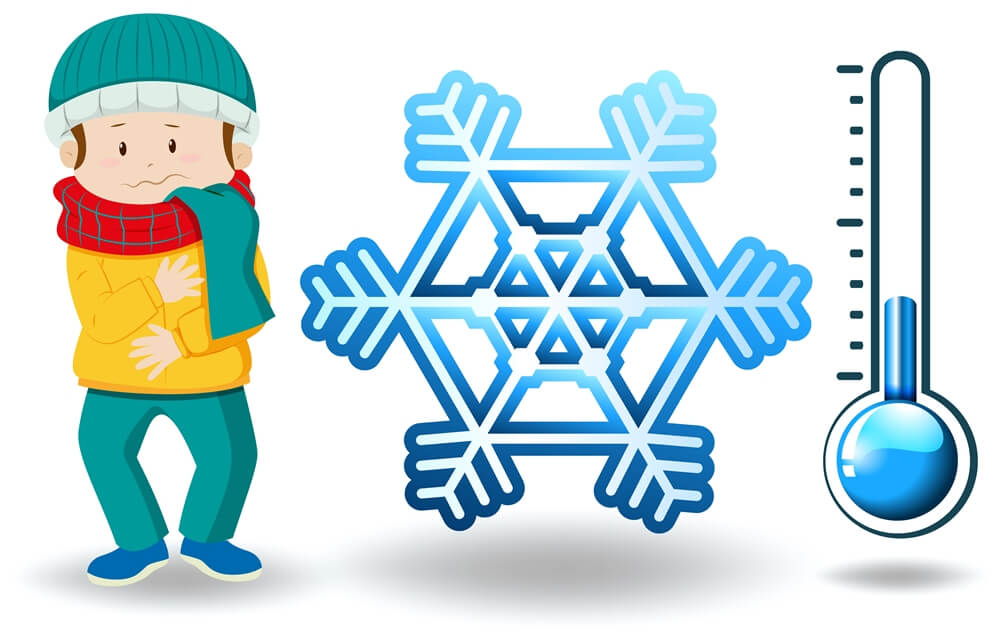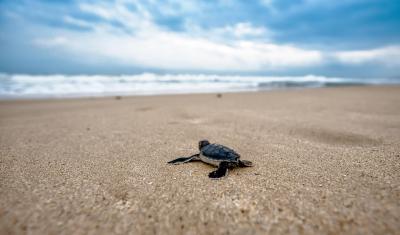Why Are Turtles Disappearing? Top Reasons for Their Decline.
Turtles are primitive reptiles and among the oldest creatures still extant on our planet. They have survived for more than 200 million years.

In the vast expanse of the world's oceans, the two climate phenomena of El Niño and La Niña have captivated scientists and fascinated the world for centuries for how they hold the power to shape weather patterns, impact ecosystems, and influence economies on a global scale.
By delving into the mysteries of El Niño and La Niña, we gain a deeper appreciation for the delicate balance that governs our world's climate system. Being the captivating manifestations of a larger climate cycle of the El Niño-Southern Oscillation (ENSO), they hold the key to unlocking the intricate interplay between the ocean and the atmosphere. El Niño represents the warm phase, while La Niña signifies the cool phase of this oscillation. Let us explore, study, and marvel at the wonders of these oceanic dances, striving to understand their complexities and adapt to their impacts in a rapidly changing world. You may also look at short and crisp comparison tables also in each section.
All we will cover in this blog:

El Niño is a complex phenomenon characterized by abnormal warming of the tropical Pacific Ocean. Basically, it triggers a cascade of atmospheric and oceanic changes that reverberate across continents.
El Niño is primarily driven by changes in ocean temperatures and their interaction with the atmosphere. During El Niño events, warm surface waters spread eastward from the western Pacific towards the central and eastern Pacific, altering atmospheric circulation patterns. This disrupts the usual trade winds, reduces upwelling of nutrient-rich waters, and can lead to droughts, flooding, and extreme weather events in various regions worldwide.
El Niño's impact is felt on a global scale, with influence spanning across continents, affecting rainfall patterns, temperature anomalies, and atmospheric circulation systems. Regions like South America, Africa, Asia, and North America experience distinct consequences, including:
The socioeconomic impacts of El Niño can also be far-reaching:
While El Niño is a natural climate phenomenon, there is growing evidence that climate change can influence its characteristics and intensify its impacts. As our planet warms due to greenhouse gas emissions, scientists are studying the complex relationship between El Niño and climate change to better understand the future dynamics of this phenomenon and its potential implications for weather pattern, sea-level rise, and ecosystem stability.

La Niña emerges as a counterpart to the warm phase of El Niño. It represents the cool phase of the El Niño-Southern Oscillation (ENSO) cycle. It is characterized by cooler-than-normal sea surface temperatures in the central and eastern tropical Pacific Ocean.
During La Niña, the Pacific trade winds intensify, pushing warm surface waters westward and causing an upwelling of cooler, nutrient-rich waters along the eastern Pacific. This circulation pattern sets off a series of atmospheric and oceanic changes that have wide-ranging impacts on weather patterns, ecosystems, and economies across the globe.
The effects of La Niña vary depending on the region, but some general characteristics include:
Agriculture:
Monitoring and studying La Niña are vital for assessing its impacts and developing strategies to adapt to its consequences, including water management, agricultural planning, and disaster preparedness. By understanding and responding to the patterns of La Niña, we can better navigate its effects and build resilience in the face of a changing climate.
| Category | El Niño | La Niña |
| Phase | Warm phase of the El Niño-Southern Oscillation (ENSO) cycle | Cold phase of the El Niño-Southern Oscillation (ENSO) cycle |
Sea Surface Temperatures | Warmer than average in the central and eastern equatorial Pacific | Cooler than average in the central and eastern equatorial Pacific |
| Trade Winds | Weakened or reversed trade winds | Strengthened trade winds |
| Atmospheric Effects | Disruption of normal weather patterns | Altered weather patterns |
The impacts on weather patterns during El Niño and La Niña events have wide-ranging consequences for agriculture, water resources, natural disasters, and socio-economic conditions in affected regions. Let's explore in detail the impacts of both phenomena on weather patterns:
South America
Increased Rainfall - El Niño often brings heavy rainfall to coastal regions of Peru and Ecuador, leading to flooding. It can also result in above-average precipitation in northern Brazil, while parts of Chile and Argentina may experience drought conditions.
North America
West Coast - El Niño tends to bring drier conditions to the coastal areas of California and the Pacific Northwest, contributing to drought and impacting water resources.
Southern United States
El Niño typically leads to increased rainfall in the southern states, including Texas and the Gulf Coast region.
Asia and Australia
Southeast Asia - El Niño can cause reduced rainfall during the monsoon season, leading to drought conditions and impacting agricultural productivity in countries like Indonesia, Malaysia, and the Philippines.
India and Australia - El Niño tends to reduce rainfall in these regions, potentially resulting in droughts, water scarcity, and agricultural challenges.
Africa
Eastern Africa - El Niño often brings reduced rainfall to countries such as Kenya and Ethiopia, leading to droughts and impacting agricultural activities and water resources.
South America
Increased Rainfall - La Niña can cause above-average rainfall in northern Peru and Ecuador, potentially leading to flooding. Conversely, southern Brazil and parts of Argentina may experience drier conditions.
North America
West Coast - La Niña tends to bring wetter conditions to the coastal regions of California and the Pacific Northwest, contributing to above-average precipitation and impacting water resources.
Northern United States and Canada - La Niña often brings colder and wetter conditions to these regions, resulting in increased snowfall and below-average temperatures.
Asia and Australia
Southeast Asia - La Niña typically enhances the monsoon season, resulting in increased rainfall in countries like Indonesia, Malaysia, and the Philippines.
India and Australia - La Niña can lead to above-average rainfall in these regions, potentially causing localized flooding and affecting agricultural practices.
Africa
Eastern Africa - La Niña often brings increased rainfall to countries like Kenya and Ethiopia, which can lead to localized flooding but also benefit agriculture and water resources.
| Category | El Niño | La Niña |
| Rainfall | Increased rainfall in the central and eastern Pacific | Variable rainfall patterns, often with increased rainfall in some regions and reduced rainfall in others |
| Droughts | Potential for drought conditions in Southeast Asia and Australia | Potential for increased rainfall in Southeast Asia and Australia, but drought conditions in other regions |
| Flooding | Increased risk of flooding in parts of South America | Variable flooding patterns, depending on regional conditions |
| Temperature | Warmer-than-average temperatures in certain regions | Cooler-than-average temperatures in certain regions |
| Hurricanes | Increased Atlantic hurricane activity | Decreased Atlantic hurricane activity |
| Snowfall | Reduced snowfall in some regions | Variable snowfall patterns, depending on regional conditions |
| Wildfires | Increased risk of wildfires in some regions | Variable wildfire risk, depending on regional conditions |
El Niño and La Niña have significant impacts on marine ecosystems, affecting various aspects of the ocean's biological communities. Here are some of the key ways in which these climate phenomena influence marine ecosystems:
El Niño: During El Niño, warmer sea surface temperatures can lead to coral bleaching, a stress response that causes corals to expel their symbiotic algae, resulting in their whitening and potential mortality. This can have devastating effects on coral reef ecosystems, as coral reefs provide habitats for numerous marine species and support biodiversity.
La Niña: With its cooler sea surface temperatures, can provide relief for coral reefs that have experienced stress during El Niño events. Cooler temperatures during La Niña can promote healthier coral growth and recovery.
El Niño: El Niño can disrupt the availability of nutrients in the ocean due to changes in oceanic currents, affecting primary productivity and the food web. This disruption can have cascading effects on marine species, from plankton to large predators, impacting their abundance, distribution, and reproductive patterns.
La Niña: La Niña can restore more favorable conditions for marine productivity and nutrient availability, leading to increased productivity and potential benefits for marine biodiversity.
El Niño: El Niño can alter oceanic conditions and impact fish populations, affecting fisheries worldwide. Changes in water temperatures, currents, and food availability can lead to shifts in the distribution and abundance of fish species, potentially disrupting commercial and subsistence fisheries. Some areas may experience reduced fish stocks and decreased fishing yields during El Niño events.
La Niña: La Niña can also influence fish populations, but the specific effects may differ from El Niño. Cooler sea surface temperatures during La Niña can create different oceanic conditions, potentially affecting the timing and location of fish spawning, migration patterns, and feeding habits.
El Niño: El Niño can disrupt upwelling, which is the process of nutrient-rich deep waters rising to the surface. Reduced upwelling during El Niño events can impact areas that rely on this nutrient supply for productive fisheries, such as along the coasts of Peru and California.
La Niña: During La Niña, the intensification of trade winds can enhance upwelling, bringing nutrient-rich waters to the surface. This can lead to increased productivity and support thriving marine ecosystems.
It is important to note that the impacts of El Niño and La Niña on marine ecosystems are complex and can vary across regions and ecosystems. The duration and intensity of these events, as well as other factors such as local environmental conditions and human activities, can further influence the specific outcomes.
| Category | El Niño | La Niña |
| Ocean Upwelling | Reduced upwelling of nutrient-rich cold water along the western coast of South America | Enhanced upwelling of nutrient-rich cold water along the western coast of South America |
| Coral Bleaching | Increased risk of coral bleaching events due to warmer waters | Reduced risk of coral bleaching due to cooler waters |
| Fisheries | Disrupted fish populations and fishing patterns | Altered fish populations and fishing patterns |
Crop Yields - El Niño-induced droughts or extreme rainfall events can significantly impact crop yields. Water scarcity and heat stress during droughts can lead to reduced agricultural production, affecting food availability and prices. Conversely, excessive rainfall can cause flooding, damaging crops and infrastructure.
Livestock - El Niño-related droughts can also impact livestock production, as reduced water availability affects animal health and forage quality.
Agricultural Productivity - La Niña's enhanced rainfall can be beneficial for some agricultural regions, promoting crop growth and higher yields. However, excessive rainfall may lead to waterlogging and increased risks of crop diseases.
Disruption of Marine Ecosystems - El Niño can affect fish populations, as changes in oceanic conditions impact the distribution and abundance of species. This disruption can negatively impact commercial and subsistence fisheries, potentially leading to reduced catches and economic losses.
Coral Reef Tourism - Coral bleaching events associated with El Niño can harm coral reefs, impacting the attractiveness of diving and snorkeling destinations and affecting tourism revenues.
Fisheries Recovery - La Niña's favorable oceanic conditions can support the recovery of fish populations, potentially leading to increased fishing yields and economic benefits for fishing communities.
Hydroelectric Power Generation: El Niño-induced droughts can reduce water availability for hydropower generation, leading to lower electricity production and increased reliance on alternative energy sources.
Water Supply and Irrigation: Drought conditions during El Niño can affect water supply for households, agriculture, and industries, leading to water scarcity and potential economic impacts.
Flooding Risks: La Niña's increased rainfall can lead to localized flooding, causing damage to infrastructure, agricultural fields, and properties. This can result in significant economic losses and challenges for recovery and reconstruction efforts.
Beaches and Water Sports: El Niño can influence coastal conditions, leading to changes in wave patterns and erosion. This may impact beach activities, water sports, and beach tourism.
Ecotourism: The bleaching and degradation of coral reefs during El Niño events can deter tourists interested in reef-dependent activities, such as diving and snorkeling.
Nature-Based Tourism: La Niña's positive impacts on ecosystems, such as coral reef recovery and increased biodiversity, can enhance nature-based tourism experiences and attract visitors interested in marine and wildlife conservation.
As we navigate an era of climate change, understanding the interaction between these oscillations and global warming becomes increasingly important. As our planet experiences the dual forces of El Niño, La Niña, and climate change, we find ourselves in a dynamic and evolving climate landscape. The interaction between these phenomena adds layers of complexity to our understanding of future weather patterns, sea level rise, and feedback loops.
El Niño events can trigger feedback loops that further contribute to climate change. For example, the release of carbon dioxide from drought-affected forests and ecosystems can intensify greenhouse gas concentrations in the atmosphere, exacerbating the warming trend.
La Niña events can also influence feedback mechanisms. Increased rainfall during La Niña can enhance vegetation growth, which, in turn, absorbs carbon dioxide from the atmosphere, potentially mitigating the greenhouse effect.
While scientists continue to study the intricate relationship between El Niño, La Niña, and climate change, there is still uncertainty regarding the exact nature and magnitude of their future interactions. The complexity of the climate system makes it challenging to predict the precise effects and outcomes.
Understanding the interaction between El Niño, La Niña, and climate change underscores the importance of global efforts to mitigate greenhouse gas emissions and adapt to the changing climate. Taking decisive action to reduce carbon emissions and implement adaptive strategies can help minimize the potential risks and impacts of these interactions.
| Category | El Niño | La Niña |
| Climate Patterns | Can influence global climate patterns and teleconnections | Can influence global climate patterns and teleconnections |
In conclusion, as we navigate a world where climate change is an ongoing reality, recognizing the interplay between El Niño, La Niña, and climate change is crucial. It empowers us to make informed decisions, develop effective policies, and take collective action to address the challenges posed by these phenomena. By embracing sustainable practices, reducing greenhouse gas emissions, and promoting adaptive strategies, we can strive for a more resilient, equitable, and sustainable future for generations to come.
These phenomena interact with climate change, which adds another layer of complexity to their effects. The warming of our planet due to greenhouse gas emissions can influence the intensity, frequency, and duration of El Niño and La Niña events, potentially amplifying their impacts. This interaction highlights the importance of mitigating greenhouse gas emissions to limit the exacerbation of these climatic oscillations.
Software designer, founder, and amateur astronaut.
I’m Spencer, a software designer and entrepreneur based in New York City. I’m the founder and CEO of Planetaria, where we develop technologies that empower regular people to explore space on their own terms.

Turtles are primitive reptiles and among the oldest creatures still extant on our planet. They have survived for more than 200 million years.
White sharks, popularly known as Carcharodon carcharias or great white sharks, represent one of the most distinctive forms of oceanic life.
Volunteering abroad is to volunteer a trip and experience gaining to use it as a positive change in communities, to acquire learning to unknown cultures, and the great self-growth process
Get weekly inspiration delivered right to your inbox!
Sign in with
Currency


